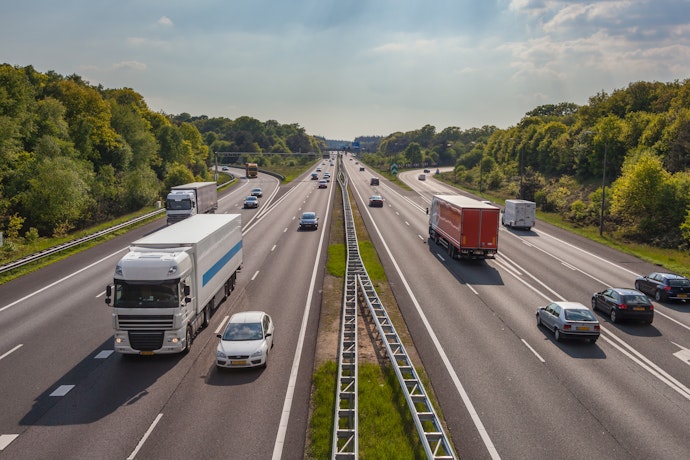How to Reduce Your Expenses
As a fleet owner, your day-to-day costs can quickly add up. What you don’t know is there are further hidden, expensive...
Read more
A combination of the words telecommunications and informatics, it was the joining of these two sciences that resulted in the field of telematics.
In its broadest sense telematics actually includes the internet itself, since it combines telecommunications (phone lines, cables, etc.) with informatics (such as computer systems).
However, the term is now more commonly used to apply to vehicle telematics, where vehicle location information is used in different business applications to ultimately help business owners better manage a fleet-based workforce.
The technology allows the sending, receiving and storing of information relating to remote objects (in this case, the vehicle) via telecommunication devices that plugs into the OBD II or CAN-BUS port, with a SIM card and onboard modem enabling communication through a mobile network.
This smart device, also known as a ‘black box’ then records and reports on various points of available data. There are many who believe, however, that telematics simply shows GPS vehicle location – this does not begin to cover the breadth of actionable intelligence that telematics provides.
But, before we get into the details of what telematics can really do, let’s quickly look at how it came about in the first place.
Telematics developed alongside the internet. As computers became smaller and more widespread, the need for an easy way to exchange data grew. This is when telecommunication technology was used to connect computers with each other as well as other devices and thus telematics was born.
(Quick fact: The actual term ‘telematics’ was coined back in 1978 by Simon Nora and Alain Minc in their report titled ‘L'Informatisation de la société’ – which was prepared for the French Prime Minister in response to the development of computer technology and the dawning of the information age).
Since that time, computer processors have become smaller and more ubiquitous, while telecommunication networks have become widespread and effective in transferring larger amounts of data, regardless of where the computer is located. Whether it's on a truck driving through the remotest parts of the Nullabor or a delivery van in Sydney CBD, telematics can transfer near real-time data to central offices to help business owner’s better manage their fleet.
At the core of a telematics system is a vehicle tracking device. It collects GPS data as well as a huge range of vehicle specific data from the vehicle’s ODBII port and transmits it via either GPRS (General Packet Radio Service), 4G mobile data or satellite communication to a centralised server that then interprets the data and enables it’s display to end users.

There is a multitude of data collected by the telematics device, which when decoded, can provide in-depth vehicle information such as location, speed, idling time, harsh acceleration or braking (measured by an internal accelerometer), fuel consumption, vehicle faults and much more.
All this data is then layered over a map in our fleet management software in near real-time and can be viewed via secure websites and apps optimised for smartphones and tablets.
Today there is practically no limit to the different applications for telematics. The world is becoming more connected every day as more devices are networked into the internet of things (IoT) and new ways to use location-based information are being developed constantly.
Yet still there is an ongoing misconception by many that vehicle telematics just shows GPS vehicle location – a simple dot on the map as it were. This doesn’t even scratch the surface.
With this telematics data, you can then determine when a driver is speeding, check the idling status of each vehicle in your fleet and send near real-time alerts to drivers to show them the fastest, most efficient routes to take. Further to this, you can also monitor fuel consumption, individual driving behaviour, time spent at (and outside of) specific locations and whether your vehicles require urgent maintenance.
The use of telematics is growing in Australia and worldwide. According to a study from Berg Insight “the number of fleet management systems in active use in Australia and New Zealand will grow at a CAGR of 12.5 percent from about 1.3 million units at the end of 2021 to more than 2.3 million by 2026”. (1)
Find the right solution for your business with our free Fleet Management Buyer’s Guide.
Simply having telematics, however, is not enough. Not all telematics solutions are created equal and in order for you to make the most out of the intelligence available, you need to find one that’s right for your business.
Adopting a telematics solution is crucial for truly efficient and effective fleet management and there are a number of significant advantages that implementing an intelligent telematics solution will bring to your business.
For starters, who wouldn’t want a complete picture of their entire fleet at their fingertips, via intuitive and easy-to-use dashboards delivered through a mobile app?
Here are six fundamental ways telematics-adopting companies are enhancing the potential of their fleets:
So, how do you know which solution is right for you and your business?
There are many telematics service providers out there but few are flexible enough to offer the right mix of features to ensure you receive the maximum benefits of tracking your fleet. The best of the bunch will give you simple usability, easy-to-understand technology and financial clarity from start to finish. What’s more, GPS tracking systems are only becoming better at integrating with your existing business applications so it’s the perfect time to consider one for your business.
Verizon Connect provides solutions to help solve all of your biggest fleet management challenges. If you want to explore this or you have more questions regarding telematics, why not schedule a short demonstration?
Source
Find out how our platform gives you the visibility you need to get more done.
Tags: Team Management, Field Management, Productivity & Efficiency




Find out how our platform gives you the visibility you need to get more done.
As a fleet owner, your day-to-day costs can quickly add up. What you don’t know is there are further hidden, expensive...
Read moreWith the many choices of GPS tracking software out there, how do you decide which one is best for your fleet business?...
Read moreMichael Chester founded Sun City Plumbing in Geraldton, in 2000. Since, the company has grown from three to 70 employees...
Read more